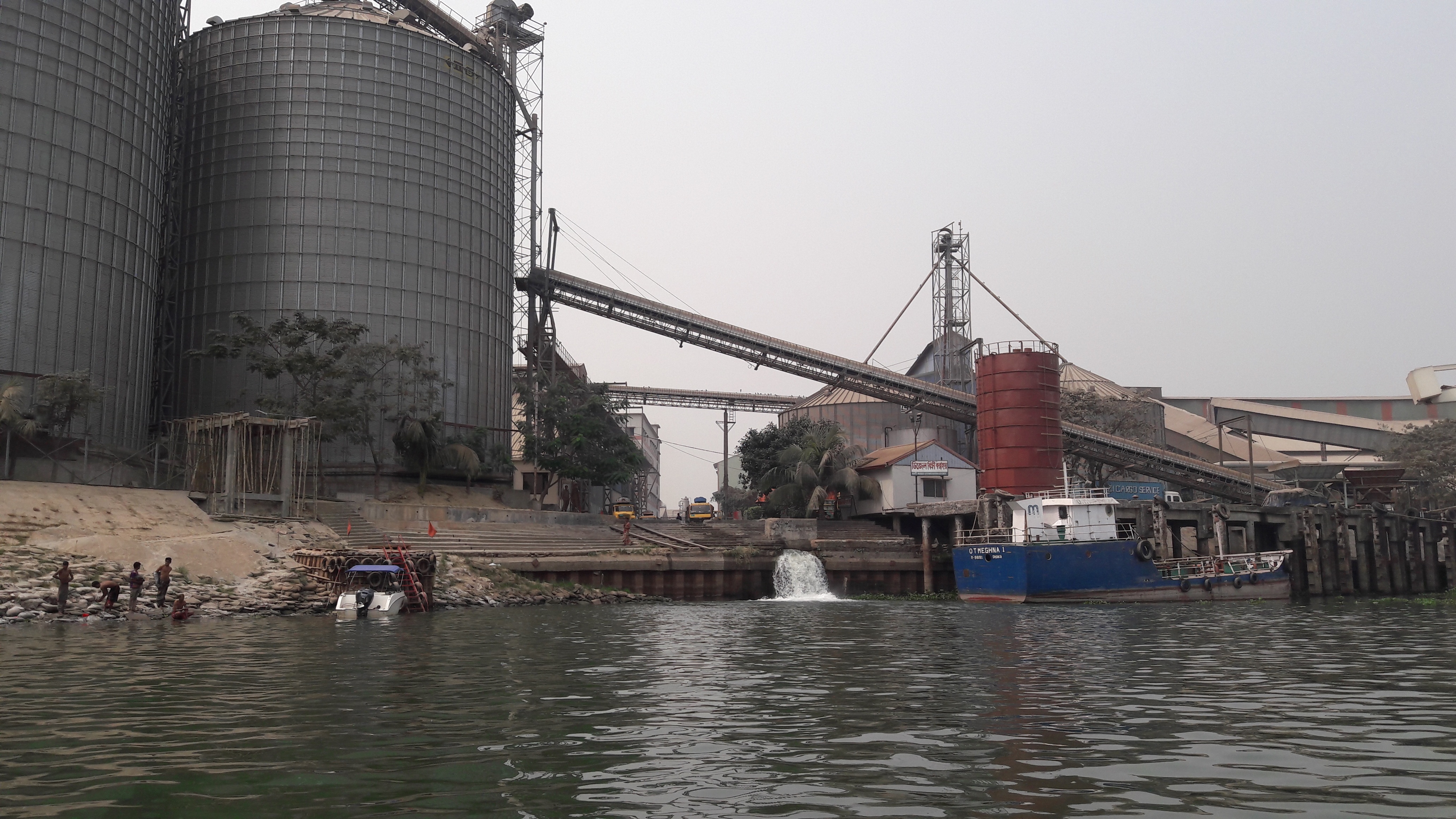...
At present, water is being used form the Buriganga and Sitalkhya Rivers. Since the quantity in these rivers is insufficient and the water quality of both rivers is poor and unsuitable as a drinking water source, the Meghna River, 30 km east of Dhaka, has been chosen as an alternative source of water. Two future extraction points have already been selected to supply a source of drinking water. These intake points will account for more than 40% of DWASA’s water supply by 2021. As such, it is critical to strengthen the monitoring and enforcement mechanism for the Meghna River.
Current Situation
A recent analysis of the water quality in the Meghna River shows that it is still good. All of the national River Water Quality standards are currently being met. However, it is at great risk of significant contamination as industrial and residential developments increase rapidly along the Meghna River. Two important developments located on the riverbanks have already been identified: the Meghna Economic Zone (MEZ) and Export Processing Zones (EPZ). The MEZ will be developed with industries such as pulp and paper, PVC, oil refineries, power plants, petrochemicals, and ceramics; it is expected to create over 20,000 jobs. There are currently eight EPZs; a ninth one is scheduled to open in the future, and the government has announced that 100 new EPZs will be created in the next 15 years.
There are provisions in national policy and law for the majority of issues related to water management and pollution control, such as: water quality; water allocation; water conservation (including environmental flows, ecologically critical areas, and groundwater); off-stream water uses (including agriculture/irrigation, domestic water supply, and industry); monitoring; compliance; enforcement; and dispute resolution. There does not appear to be a provision in either national policy or law to control non-point sources of pollution.
...
